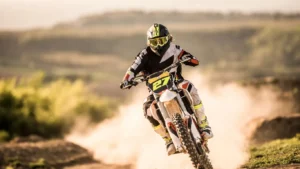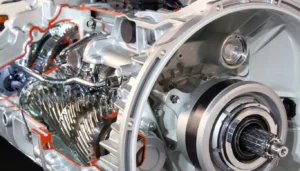Like any true biker, one just can’t help but love everything on two wheels. Whether it’s riding down a trail or just your neighbourhood steep climb, you approach both of them with much excitement.
Yet, all of us have some preferences. And like finding a soulmate for yourself is so necessary, you’ll still need to find a perfect bike. But there is always a confusion choosing a perfetc engine and hence being a noob you must be thinking which to choose between 2 stroke or 4 strokes dirt bike for a beginner?
Finding the perfect bike for yourself is an integral aspect of the riding experience. There are various aspects that one needs to consider before zeroing in on ‘the chosen one’.
Choosing a perfect dirt bike for yourself sounds like a daunting task in itself, more so when you are a beginner. So, like any other millennial, you do what comes naturally to you:
You google which one is better? A 2-stroke or a 4-stroke dirt bike? You see the results, study them carefully and find yourself with a headache rather than an answer.
You take a quick nap, wake up and realise you still don’t know the answer to your question.
Here’s my two cents on the matter;
Before you know the answer to that, you must know what is a 2-stroke and 4-stroke bike?
What is 2-stroke?
Combustion and compression are the two key functions of any bike. Simply put, the engine will fire and ignite the spark plug for each revolution of the crankshaft i.e. for each revolution of the crankshaft the engine fires only once.
This in turn makes the bike way more lightweight than the other bikes. Obviously, being lightweight, it is faster than its 4-stroke siblings.
What is a 4-stroke?
A 4-stroke engine has four main functions; intake, compression, combustion and exhaust. This kind of engine will only fire every two revolutions of the crankshaft. The extra functions of this engine make it heavy and sophisticated but equip it with more robust power.
So, a two-stroke engine is equivalent to a much higher four-stroke engine. For example, a 125cc two-stroke engine is equivalent to a 250cc four-stroke one.
Now that we are equipped with the basics of both the engines, let’s discuss the advantages and disadvantages under various sections.
Beginner-friendly:
A 4-stroke bike is easier to handle for a beginner as it is easy to control. Also, it requires very less gear shifting which is quite a nuisance to any beginner. However, a 4-stroke bike is on the heavier side than its 2-stroke counterpart.
So, as long as some extra pounds don’t bother you, it’s certainly the right choice for you.
The only thing that a 2-stroke has it going under this category is it’s cheaper. As a newbie, if your prime concern is not blowing a hole in your pocket then this seems to be the right choice for you.
In addition, if you are a shorter rider, you’ll certainly prefer the less weight of this bike.
Moreover, you might be an enthusiast still and the price of a 4-stroke may dishearten you.
Am I willing to spend this much on a dirt bike? What if I don’t like dirt bike riding after a few months? Wouldn’t that be a really poor investment on your part?
Well, it most certainly could be.
The track that you want to ride your bike on can also be a deciding factor in the kind of bike you end up choosing. There are mainly two types of paths that your bike will zoom on; trails and dunes.
If you are one of those riders who prefer trails then 4-stroke is your go-to machine. With its dependable torque and controllable power, it zooms ahead of its 2-stroke counterpart. (And that too quite easily)
While trail riding isn’t smooth, the power provided by the 4-stroke certainly is. It is common knowledge that dirt bikes require revving in order to avoid fouling the plugs. A 4-stroke machine would do that easily, without even breaking a sweat. While we certainly can’t say the same thing for the 2-stroke.
Dunes:
However, if you are one of the dune riders your preference for the ideal bike would be very different from our trail rider brothers.
When riding the dunes, a 2-stroke is much more controllable and easy to manoeuvre. Dune racing is more or less all about going uphill and here a 2-stroke will be the ideal candidate.
Here you can see all the things it can do that too as smoothly as any bike possibly can.
Remember those shirts that read ‘BORN TO RIDE’ ?. Well, a 2-stroke is just born to ride on dunes. (Yeah, it’s that perfect for dunes)
Investment: The amount of money you are willing to spend can also be a deciding factor in choosing your ideal bike. A 4-stroke bike, albeit all its advantages, will cost you much more than a 2-stroke one.
Even if you decide to buy a used bike, a 2-stroke would cost you much less compared to its other sibling.
Actually, if you are planning to buy a 2-stroke, buying a used one would make much more sense. It will only save you tons of money.
Weight:
As a beginner, you’ll fall off your bike more frequently than the seasoned riders and then the weight of your machine could be of crucial importance to you and your back.
No one wants to break their back lifting heavy weights (We already have gyms for that, don’t we?).
So, in this scenario, the lightweight 2-stroke could be a saviour for you and for your back as well. It would certainly be easier to ride and even to lift up after you fall.
Maintenance:
With more moving parts and clearly more sophistication involved, the 4-stroke is comparatively high on maintenance. They have a reputation for being expensive to rebuild and they live up to it.
As for its counterpart, 2-strokes are economical to rebuild.
Although when it comes to regular and standard maintenance like changing the oil, cleaning the air filter both of these bikes stand head to head with each other.
Here, they cost almost the same to their owners.
Hence maintenance isn’t really an issue in choosing any one of these babies or even rejecting one as for that matter.
Resale value:
Some of us are nostalgic about our ‘firsts’, we like to hold onto memories of our first love, first kiss or a first bike. But if you aren’t one of those, you might want to sell off your dirt bike once you have gotten a hang of them.
Think of it as graduating as a dirt bike rider. So which bike has a better resale value? While it always varies from bike to bike as the condition of one bike can be starkly different than the other of the same category.
As a general rule of thumb, a 2-stroke will have a better resale value. It will give you a decent amount in resale but unfortunately, the same isn’t true for 4-stroke bikes.
Environmental factor:
I know what you are thinking. Bikes and environment? That discussion could never end on a good note but just hear me out. If you are bothered about the amount of damage your bike is doing to the environment, don’t buy a 2-stroke.
While new technology has certainly reduced the amount of exhaust, a 4-stroke is still better under this category.
2-stroke exhaust great volume of carbon monoxide, hydrocarbons and smoke. The exhaust of a single two-stroke could be equal to about 30 four-stroke. As you can see, the environmental aspect of your two-stroke can’t be ignored at any cost.
Conclusion:
So, which one to choose? As you can clearly see from the article, there’s no one-word answer to that question.
The answer can vary from person to person depending on various factors.
For beginners and weekend riders, a 2-stroke would make more sense because of its low weight and cheaper maintenance cost. Yes, you do lose on some torque but as a newbie, you shouldn’t let that bother you much.
However, if you are a professional rider, going with that 4-stroke would be your best bet. Of course, it requires way more maintenance but you can certainly take care of the new baby.
Plus, while racing you’ll be thankful for those extra few torques. Imagine the look on the face of your competitor when you zoom past them on the track.
I hope you have got the perfect match for you after reading the article. Now that you have your answer just go and get that dirt bike from the nearest store. Happy riding!
And remember, as always, ’WEAR A HELMET’.






